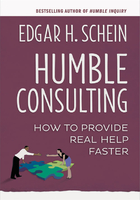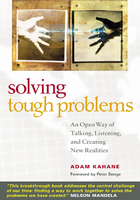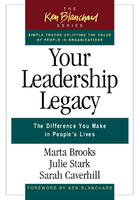Tough Problems
“There Is Only One Right Answer”
WHEN I WAS YOUNG, I thought that the world's toughest problems would be solved by the world's smartest people, and I wanted to be one of them. So in 1978, when I started university at McGill in my home town of Montreal, I chose honors physics. This degree involved courses only in theoretical physics and advanced mathematics—nothing but the laws of nature and of pure reason.
My classmates and I were proud to be inducted into this elite intellectual fraternity. We trained by reproducing an increasingly difficult series of logical proofs. Our textbooks contained questions at the end of each chapter and the answers at the back of the book. Our quantum physics course was graded based on a single open-book exam. Before the exam I worked through every exercise in the text, and so I got a perfect grade.
We understood that there is only one right answer.
During the summers, I had electronics jobs in different laboratories. When you're troubleshooting circuits, either the wires are connected properly and it works, or not: you're completely in control. One weekend I went horseback riding, and I was concerned with how to get the horse to raise its leg to get over a log, when—without any instructions from me—the horse did it! I was not used to dealing with living, sentient systems.
One year, while I was still a student at McGill, I participated in a meeting of the Pugwash Conference, an association of the world's top scientists dedicated to preventing nuclear war. I had written a paper arguing that airplanes were more ideally suited than satellites to monitor nuclear test ban treaty compliance, because airplanes are cheaper and more flexible. I ignored the practical and legal reasons why this regime would be harder to implement. Bob Williams, a Princeton scientist and policy advocate, pleaded with me not to fall into the idealist's trap of “letting the best be the enemy of the good.” I didn't understand his point. Wasn't there only one right answer?
At one of the conference sessions, a woman from Sri Lanka gave a compelling speech about her country's shortage of energy. I liked the idea of using my scientific training to solve complex societal problems. One of the conference participants, physicist John Holdren, ran a graduate program in energy and environmental economics at the University of California at Berkeley, and so in 1982 I moved there.
The Berkeley economics department had a strong theoretical and mathematical orientation. They and I thought that my physics degree was adequate preparation—even though I had not taken any undergraduate courses in economics or other social sciences—because their mathematical models of economic behavior treated people like predictable, inert objects. I discovered that economists are only slightly less confident than physicists that they possess objective truths about the way the world works. When their truths were questioned during the recession of the early 1980s, my professors were embarrassed and distraught. “This really isn't a good time for you to study macroeconomics,” one counseled.
At Berkeley I reoriented myself from solving tough physics problems to solving tough public policy problems. I learned to be a policy “wonk”: I'd analyze a societal problem, calculate the right solution, write a paper on it, and then advocate for government decision makers to implement it. I built a computer model of the Canadian economy to assess the impact of different ways to tax energy and to critique the government's policies. I wrote my thesis on the Brazilian government's program of substituting alcohol for gasoline. After reading every report written about the program, I concluded that it was misguided.
My classmates and I fought for more rational energy and environmental policies. In our second year seminar, “Tricks of the Trade,” John Holdren taught us how to testify before a congressional committee—our idea of the ultimate decision makers—and to give a sharp answer on the spot: “That's an excellent question, Senator. The answer is 10.7 exajoules. That's why I recommend that you vote in favor of this legislation.” We were learning to be “policy doctors”: to make a dispassionate diagnosis and write out a policy prescription, which the decision makers would take and implement and which would cure the problem.
Once I had my degree from Berkeley, I took a series of economics research jobs, first at the Lawrence Berkeley Laboratory in Berkeley, then at the International Energy Agency in Paris, the Institute for Energy Economics in Tokyo, and finally at the International Institute for Applied Systems Analysis (IIASA) in Vienna. Set up during the Cold War, IIASA brought scientists from the East and West blocs to work together, apolitically, on complex global challenges such as population pressure, global warming, and energy shortages.
The institute had a relaxed, intellectual atmosphere. In the mornings we were served Viennese pastries with coffee. In the afternoons there were lectures from resident and visiting scholars. I set out to work on the biggest, toughest problem I could find. I was going to calculate, by hand, a “general equilibrium” model of the interactions among energy, capital, labor, and technology in the world economy. I wanted to prove mathematically the optimum level of world energy consumption. This would indicate the correct policies that the world's decision makers should implement for energy supply, pricing, and conservation. This problem turned out to be more difficult than I expected. I spent week after week covering sheet after sheet of paper with formulae, getting more and more confused and frustrated. Eventually it dawned on me that the problem was probably mathematically insoluble and, more devastatingly, that nobody had any interest in or use for any solution I might find. I had completely floated away from earthly reality.
This realization led me, when I returned to the United States in 1986, to look for a “real job.” I got one at Pacific Gas and Electric Company in San Francisco, the monopoly supplier of electricity and natural gas to Northern California. PG&E, was right in the middle of pitched analytical and political battles over nuclear power, environmental protection, energy conservation, and utility deregulation. I was given the title Corporate Planning Coordinator and an office near the top executives, with a beautiful view of San Francisco Bay. My job was to work on strategic problems and recommend solutions to the executives. I understood that the way to get ahead was to know the one right answer to any question, quickly: “Well, boss, the return on that investment would be 10.2 percent. So I recommend that we go for it.”
PG&E a publicly traded company, was strictly regulated by the California Public Utilities Commission (CPUC). The company had a simple, highly controlled business model: it forecast what it needed to do in order to serve its ratepayers, added up these “revenue requirements,” and then petitioned the CPUC for permission to charge rates sufficient to cover them. These regulatory rules were designed to provide consumers with reliable, low-cost energy, and to provide PG&E shareholders with a low but steady rate of return. The primary focus of PG&E's management attention was therefore not on customers, but on formal public hearings before the CPUC. Fittingly, eight of the nine members of the company's executive Management Committee were lawyers.
In our semijudicial rate hearings before the CPUC, we asked for rate increases to cover the cost of investing in new power plants to meet growing consumer demand. Our case rested on the soundness of our forecasts. Consumer and environmental groups tried to prove that our forecasts were too high and that we did not really need to build more power plants or have higher rates. We had a set of sixteen detailed, linked mainframe computer models that took ten days to run through. At the CPUC hearings, energy policy experts fought “model wars” as to who had the right numbers about the future; in other words, who had the societally optimal answer.
After a year, this whole approach started to seem like make-believe to me. From my work on forecasting at IIASA and before, I knew that no one could really have the right numbers about the future—especially because deregulation was about to upend the industry. This orderly, controlled edifice of models and predictions and hearings was not realistic.
In the midst of all of these changes and challenges at PG&E, I was very content to be working directly for the real decision makers. I reported to the Senior Vice President of Corporate Planning, Mason Willrich, a former law school professor and an arms control policy expert. I was delighted with my boss, and I could only imagine how much more brilliant his bosses must be. The hierarchy at PG&E was so obvious that it was never even mentioned. The CEO was in charge, his senior officers were next in line, and then the officers, and so on down the ranks. I assumed that the people at the top were smarter and more informed than the rest of us.
I was keen to fit in and make a good impression. On my first day I mentally measured the width of Willrich's trouser leg where it hit his shoe, so that I could make sure mine did the same. After only a few weeks, I found myself smiling every time I walked past a PG&E manhole cover on the sidewalk. I was happy to be doing an important job for an important company.
Because I coordinated internal planning studies for the Management Committee, I went to some of their meetings in the enormous, oak—paneled boardroom on the top floor. Here, conversations were polite, reasoned, and completely under control. The company secretary provided orderly agendas and discreetly negotiated minutes.
In my second year, I was assigned to assemble the analytical material for the annual Management Committee strategy retreat. The meeting was held at a rustic lodge on a wild mountain property, near one of the company's small hydroelectric dams. I was excited to be with the bosses in their inner conclave, even though on the first evening, the president took several hundred dollars away from me in a poker game.
Given my exalted expectations, the retreat itself was a profound letdown. I watched the business sessions in stupefied disbelief. The executives ignored the analytical material, played power games, ganged up on each other, pretended to misunderstand, settled old scores. I was deeply disillusioned and felt my commitment to the company slipping away. This was not at all the brilliant, informed, rational decision making that I had been trained to expect. The world did not work the way my one-right-answer textbooks said it did. Something much messier was really going on—and I wanted to understand it.
Seeing the World
IN 1988 I LEFT PG&E and took a job in the strategic planning department of Royal Dutch/Shell, the giant Dutch-British energy and chemicals company: almost 100 years old, $100 billion in sales, and over 100,000 employees in more than 100 countries; the fourth largest industrial company in the world. The global petroleum business was much different from the California utility business. Shell was not concerned with regulatory hearings; it was dealing with the hurly-burly of the marketplace. It was wonderfully cosmopolitan, intellectual, and practical: a combination of British subtlety and Dutch bluntness. If Shell staff were arrogant, I thought, it was because they deserved to be: they were the best. Here I could learn how the world really worked.
My job was to come up with new ideas that would provoke, stretch, and challenge the managers' thinking about tough business problems—to improve the quality of their strategic debates. From the window of my office in the London headquarters, I could see the Houses of Parliament. Like Parliament, Shell believed in the value of debate to hammer out a sound way forward. And like “Her Majesty's Loyal Opposition,” our department had to ask the difficult and awkward questions that would challenge the managers and improve the quality of their thinking.
Our primary tool for this challenging was scenarios. Our leader was Dutchman Kees van der Heijden, a rigorously thoughtful man who had worked with Pierre Wack, the philosophical Frenchman [1]who had invented this approach in the early 1970s. Shell could neither predict nor control the future of its business environment, and it was therefore impossible for us to compute one right strategy for the company. Instead, the company's managers needed to be alert to what was happening and what might happen in the world, so that they could quickly recognize meaningful changes and adapt to them. Our scenarios were a set of carefully constructed, plausible stories about how the future might unfold over the next twenty years.
Wack's methodology was sophisticated and expansive. He called the first phase of the work “breathing in.” We observed the world, as broadly and carefully as we could, looking for underlying trends. We had wide-ranging interests: the future of the nation state, environmental science, automobile technology, social values, Middle East economics, the politics of international trade. I found this a wonderful intellectual adventure and an amazing education. We read books and journals, commissioned and wrote research papers, and organized expert seminars.
The most important way we learned about the world was to go out and talk with people. We had a blank check to go anywhere and meet anyone who could help us see the trends more clearly. The purpose of these meetings was not only to learn what was going on but also how different people thought about it. I talked with civil servants in the UK and Belgium, businessmen in Singapore and Brazil, environmentalists in Kenya and Germany, journalists in Thailand and India, academicians in China and Czechoslovakia, politicians in Korea and Nigeria, engineers in Japan and the United States.
After two years of breathing in, we were ready to breathe out. We spent months arguing about the significance of what we had seen and how it added up. I enjoyed these debates and played to win. Eventually we selected two scenarios that effectively and elegantly synthesized what we had learned about what might happen in the company's business environment. Then we wrote these scenarios up in the form of plausible, logical, quantified stories. The management decisions of Shell were never included in the stories: we assumed that the company's actions had no impact on the scenarios.
Next, we flew around the world, with our thick deck of view-graphs, to run workshops for every management team in the company. We challenged each team to study the two scenarios and consider what each, were it to occur, would mean for their business. What specific opportunities and threats would arise in their markets? Which of their unit's strengths and weaknesses would be exposed? What actions would be indicated? We wanted the managers to “live in advance” and internalize these different possible futures. We did not want them to operate from a single fixed view of what they thought would or should happen. In this way, every unit in Shell adjusted its strategy so as to be more robust against both of these stories.
One of our global scenarios focused on climate change. I was proud of this work because I was concerned about environmental problems. This helped Shell managers see and recognize the importance of these issues earlier than competitors, and to take the lead in sustainable development. As far as I was concerned, Shell was doing a good job in the world. But I was now more pragmatic, even cynical. I was far beyond the na?ve idealism that had brought me to Berkeley. I now knew that every trend had a countertrend, every argument had a rebuttal, and every solution produced a new problem. I knew that there was no longer one right answer. My world had become more realistic—and more complex.
In 1990, van der Heijden retired from Shell. He was replaced by Joseph Jaworski, an outside hire with a markedly different background and orientation. Jaworski was a successful Texan trial lawyer and businessman who had spent the 1980s founding and building the American Leadership Forum, a nonprofit organization dedicated to strengthening collaborative civic leadership in the United States. He was innovative and curious. He was not an expert in global scenarios and did not mind admitting it. He was [2]also intensely idealistic, which set his pragmatic colleagues, including me, on edge.
We started to develop a new set of global scenarios. After the fall of the Berlin Wall, we focused on the twin revolutions of political and economic liberalization and globalization. We constructed two new stories—named New Frontiers and Barricades—about how the world might unfold as a result of these dynamics. New Frontiers described what happens when poor countries liberalize successfully and claim a larger role on the world stage. This opening up is turbulent and painful to many established interests in both poor and rich countries, but it continues because people believe that it is in their long-term self-interest. In Barricades, people resist globalization and liberalization because they fear they might lose what they value most: their jobs, power, autonomy, religious traditions, and cultural identities. Economic and political vested interests are deeply threatened by opening up, and they attempt to contain it.
These new scenarios raised a new set of tough business problems for Shell managers to address. And they had a significantly different twist that was elicited by Jaworski's visionary and activist orientation. He and I and a few other members of the scenario team were convinced that New Frontiers would be better for the world than Barricades, and that Shell should, in addition to preparing for both scenarios, actively promote New Frontiers.
Some people in our department thought that this would not be right. Favoring one story over another would make managers less adaptable in the face of uncertainty. Furthermore, companies should not intervene in politics; they should stick to running businesses.
I was intrigued by this debate about the appropriate role of Shell in the world. I understood the reasons for detached observation and challenge, and why Jaworski's activism did not quite fit in. Shell's business managers were responsible for creative, entrepreneurial action; our department's job was just to challenge these managers' thinking. I also understood the risks of corporate hegemony, and that many citizens would view any attempts by Shell to act outside its business role with skepticism and hostility. At the same time, the company's belief—“we are just business people, we observe what is going on and try to adapt, within laws and rules that governments set”—struck me as somewhat disingenuous and self-serving, even irresponsible. Shell, one of the world's largest and most powerful organizations, was in general a beneficiary of the way the world's rules had been written, and actively lobbied for its specific interests in economic, energy, and environmental rule making. I wondered whether there wasn't a different, more engaged way for the company to participate in solving complex problems.
Jaworski's passionate and idealistic activism challenged my dispassionate and realistic scientific training. He looked for evidence of the better future he intuited and hoped was possible and then acted entrepreneurially to bring this vision into reality. I admired his whole-hearted commitment and leadership. And I was surprised to discover that my own desire to make a difference, which had faded after I left Berkeley and entered the “real world,” was returning.
The Miraculous Option
IN THE MIDDLE OF 1991, Jaworski was in his at Shell when he received a telephone call from Pieter le Roux, a professor at the left-wing, black University of the Western Cape in South Africa.
One year before, the white minority government of E W. de Klerk had released Nelson Mandela from prison after twenty-seven years, and simultaneously legalized all the black opposition parties, including Mandela's African National Congress (ANC). This broke a deadlock in one of the world's most stuck political situations. Now the government and the opposition were trying to do what nobody believed could be done: negotiate a peaceful transition from an authoritarian apartheid regime to a racially egalitarian democracy.
Le Roux wanted to organize a scenario project to help the opposition develop its strategy for this unprecedented transition. South Africa had had two previous scenario projects, both of which had been sponsored by big South African companies and advised by Pierre Wack, by then long-retired from Shell. Le Roux liked the idea of using a corporate methodology for “the world's first scenario planning exercise of the left.” He also wanted an advisor from Shell and so called Jaworski to ask for one.
Shell executives were still smarting from the criticism they had endured during the years when their products had been boycotted internationally because of Shell's investments in South Africa. And Jaworski was keen to find ways for the company to get engaged in creating New Frontiers. It was therefore agreed that I would provide methodological advice to the project team and facilitate their scenario workshops. This sounded interesting to me, and so in September 1991I flew from London to Cape Town for the project's first workshop.
The workshop venue was the Mont Fleur Conference Center on a wine estate in the mountains just outside Cape Town. Le Roux had assembled a group of twenty-two influential South Africans. He had invited leaders from all the main groups within the left-wing opposition: the ANC, the radical Pan-Africanist Congress (the PAC, which had not yet renounced their “armed struggle"), the powerful National Union of Mineworkers, and the South African Communist Party. He had also, daringly, invited some of their longtime adversaries from the white business community and academia. The team therefore represented, unofficially, parts of both the existing establishment and the establishment-to-be—a microcosm of the future South Africa.
The experience of constructing Shell-type scenarios in a group dominated by leftist African activists was an adventure for the participants and for me. Trevor Manuel, head of the ANC's Economics Department, introduced me to the group as “a representative of International Capital.”
I could see that this scenario meeting was not going to be like the Shell ones I was used to. We were not working on an ordinary problem of organizational strategy but on an extraordinary national transformation. The team members had not come to the meeting because they had been told to or because it was their job, or because they or their satisfied organizations wanted to adapt as best they could to an uncertain future. They came because they were all deeply dissatisfied with the status quo and committed to changing it. They saw this project as an opportunity to participate in giving birth to the “New South Africa.”
The composition of the team had two benefits for our scenario work. First, the team wouldn't have to seek out other people in order to accomplish their core scenario-building task—“breathing in” the reality of South Africa from multiple perspectives—because most of the key perspectives were already represented. Secondly, le Roux had begun the project with the endorsement of three top black leaders: Thabo Mbeki of the ANC, who later succeeded Mandela as president of the country; Anglican Archbishop Desmond Tutu; and Deputy President Dikgang Moseneke of the Pan-Africanist Congress. So we already had links to the opposition leaders whose strategies we were trying to inform.
The team started off in mixed small groups, brainstorming possible scenarios for South Africa over the decade ahead. I asked them to use the Shell convention and to talk not about what they or their party wanted to happen—their usual way of talking about the future—but simply about what might happen, regardless of what they wanted. Each small group could present back to the whole group any story they wanted, as long as they could argue that it was logical and plausible. The listeners in the plenary were not permitted to shout down the story with “That couldn't happen” or “I don't want that to happen.” They could only ask “Why would that happen?” or “What would happen next?”
The team found this scenario game to be fabulously liberating. They told stories of left-wing revolution, right-wing revolts, and free market utopias. They told some politically incorrect stories, such as “Growth through Repression” (a play on words on the left's slogan of “Growth through Redistribution"), in which a Chilean-type authoritarian government produces strong economic growth. They also rejected as implausible some politically correct stories, such as one in which the People's Republic of China provides the military support that enables a victorious socialist insurrection in South Africa.
The workshop was taking place just after the white government had relaxed its “petty apartheid” restrictions on social interaction. The scenario team was excited to be able to work together across white-black, establishment-opposition lines. Many of them were meeting for the first time, and the relaxed, residential setting helped them to get to know one another. We had the whole of the beautiful Mont Fleur center to ourselves. During breaks in the workshop we went for walks on the mountain or played volleyball or billiards. In the evenings we had long conversations in the lounge, which had a well-stocked wine cellar sponsored by one of the participating companies. I chatted by the fireplace with Dorothy Boesak, a black community leader who was coordinating the project. This whole scene was remarkable for many reasons, but especially because only a few years before, South African laws would have prohibited any such socializing between whites and blacks.
The first brainstorming exercise produced thirty stories. The team combined these and narrowed them down to nine for further work, and set up four subteams to flesh out the scenarios along social, political, economic, and international dimensions. The subteams worked from September through December, when the whole team reconvened at Mont Fleur for a second workshop. They first addressed the nine scenarios in more depth and then narrowed the field to four that they thought, given the current situation in the country, were the most plausible and important. After that workshop, the team went back to their own organizations and networks to test these four scenarios. At a third workshop, in March 1992, the participants reviewed and refined the write-ups of the final scenarios and agreed how they would be published and disseminated. Finally, in August, the team held a fourth, one-day workshop—with a four-hour break in the middle so that participants could watch an important rugby game—to present and test the logic of the scenarios with a broader and more senior group, including politicians from the white liberal Democratic Party, the right-wing Conservative Party, and the governing National Party.
The team's final scenarios asked the question: How will the South African transition go, and will the country succeed in “taking off"? Each of the four stories gave a different answer and had a different message that mattered to the country in 1992. South Africa was in the middle of the contentious and risky transition [3]negotiations. Nobody knew how or even whether they would succeed, or if the country would remain stuck, closed, embattled, and isolated. As a set, the scenarios provided a provocative road map for this transition. There were three dark prophecies of futures to avoid: Ostrich, in which the nonrepresentative white government sticks its head in the sand to try to avoid a negotiated settlement with the black majority; Lame Duck, in which there is a prolonged transition with a constitutionally weakened government which, because it purports to respond to all, satisfies none; and Icarus, in which a constitutionally unconstrained black government comes to power on a wave of popular support and noble intentions, and embarks on a huge and unsustainable public spending program, which crashes the economy. Then there was one bright vision of a future to work towards: Flight of the Flamingoes, in which the transition is successful because all the key building blocks are put in place, with everyone in the society rising slowly and together.
Once the four scenarios had been agreed upon, the team introduced them into the national conversation. They inserted a twenty-five-page booklet into the leading weekly newspaper, arranged for the work to be discussed in the media, and distributed a cartoon video of the four stories. Most importantly, they ran more than 100 workshops for leadership groups of their own and other influential political, business, and civic organizations, where the four scenarios were presented and debated. President de Klerk reacted to Mont Fleur by saying, “I am not an Ostrich.”
Icarus got the most attention. Here the leading economists of the left were warning their comrades of the dangers of irresponsible left-wing economic policies. Mosebyane Malatsi of the Pan-Africanist Congress, the ANC's main rival on the left, presented Icarus to his own top leaders. He said, “This is a scenario of what will happen if the ANC comes to power. And if they don't do it, we will push them into it.” Malatsi was showing his colleagues both an unfamiliar and undesirable economic scenario for South Africa and the role that their own policies and actions would play in such a scenario. His presentation produced a long, intense, self-critical discussion among the PAC leaders. Soon after this meeting, the PAC changed their economic policies and then decided to abandon their armed struggle and join the constitutional negotiations.
A similar shift in thinking occurred among the top leaders of the ANC. Trevor Manuel and his deputy Tito Mboweni led the presentation to this group, which included Nelson Mandela, Oliver Tambo (president of the ANC), and Joe Slovo (chairperson of the South African Communist Party). At the time, the ANC's leadership was focused primarily on achieving a political, constitutional, governmental, and military transition. Their economic thinking, formed during the Cold War and the South African guerrilla war, was tightly held. Their general view was that the country was rich and that an ANC government could simply redistribute money from rich whites to poor blacks. Icarus, presented at this meeting by their own top two economists, was therefore a direct attack on the party's orthodoxy. When some participants demurred, it was Slovo, citing his personal experience with failed socialist programs in the Soviet Union and elsewhere, who argued that Icarus needed to be taken seriously.
The economic message of Mont Fleur affected ANC thinking profoundly. Derek Keys, minister of finance in the de Klerk government, attended the fourth Mont Fleur workshop, and one evening he offered to share some material from a briefing on the economy he had just given to the de Klerk cabinet. Manuel and others said they were interested, and a long conversation ensued. Reporter Patti Waldmeir later described it this way:
Keys gave ANC economics head Trevor Manuel a briefing on the economy, and Manuel repeated it to Mandela. “And I got frightened,” Mandela recalls. “Before Trevor finished, I said to him, ‘Now what does this mean as far as negotiations are concerned? Because it appears to me that if we [4]allow the situation to continue … the economy is going to be so destroyed that when a democratic government comes to power, it will not be able to solve it.’” Mandela made a decision—the deadlock [in the then-stalled negotiations on a post-apartheid political order] must be broken.
So Mont Fleur helped to shift the economic thinking and acting of the ANC and other left-wing parties and to avert an economic disaster. One of the most important surprises and successes of the post-1994 ANC government has been its strict and consistent fiscal discipline, as articulated in the 1996 Growth, Employment, and Reconstruction (GEAR) policy. In his history of this transition, Allister Sparks refers to this fundamental (and still controversial) change in economic policy, incubated at Mont Fleur, as “The Great U-Turn.” In 2000, seven years after the project ended, Trevor Manuel, who by then had succeeded Keys as the country's first black minister of finance, had this to say:
It's not a straight line [from Mont Fleur to GEAR]. It meanders through, but there's a fair amount in all that going back to Mont Fleur … I could close my eyes now and give you those scenarios just like this. I've internalized them, and if you have internalized something then you probably carry it for life.
Businessman and political analyst Vincent Maphai, one of the convenors of Mont Fleur and an intimate observer of the ANC cabinet, said, “Trevor Manuel and Tito Mboweni are aimed at one thing: preventing the Icarus scenario.” In 1999, Mboweni, at the official banquet for his inauguration as the country's first black governor of the Reserve Bank, reassured his audience of local and international bankers by saying, “We are not Icarus; there is no need to fear that we will fly too close to the sun.”
Looking back, South Africans have since 1994 been on a slow, steady, collaborative ascent: a Flight of the Flamingoes.
I was delighted and fascinated by all of these impacts of the Mont Fleur team's work. This was the first time that I had descended from observing complex problems from above and outside as a researcher and corporate planner, to engaging right up close with a group of people who were in the middle of working through solutions. Their process did not work the way I expected it to. There were no clever viewgraphs or brilliant experts or anonymous decision makers in the picture. The stories had played a part in solving an important set of national problems, but they were really quite simple, even simplistic—not nearly as sophisticated and carefully thought through as our Shell scenarios.
The essence of the Mont Fleur process, I saw, was that a small group of deeply committed leaders, representing a cross-section of a society that the whole world considered irretrievably stuck, had sat down together to talk broadly and profoundly about what was going on and what should be done. More than that, they had not talked about what other people—some faceless authorities or decision makers—should do to advance some parochial agenda, but what they and their colleagues and their fellow citizens had to do in order to create a better future for everybody. They saw themselves as part of—not apart from—the problem they were trying to solve. The scenarios were a novel means to this engaged problem-solving end.
The Mont Fleur scenario team had used the same methodology as the Shell team, but for a fundamentally different purpose. At Shell we built scenarios to improve our managers' ability to adapt to whatever happened in the future. At Mont Fleur, by contrast, the team built scenarios not only to understand what was happening and might happen in the future, but also to influence and improve the outcome. At Shell we were observers and reactors; at Mont Fleur, team members were actors. The Mont Fleur team's fundamental orientation—and the primary message they gave to the leadership groups they engaged with—was that more than one future was possible and that the actions they and others took would determine which future would unfold. The [5]team did not believe they had to wait passively for events to occur. They believed they could actively shape their future. They understood that one reason the future cannot be predicted is that it can be influenced.
This was the same point that Jaworski had been making to our team at Shell. In his book Synchronicity: The Inner Path of Leadership, Jaworski later wrote:
If individuals and organizations operate from the generative orientation, from possibility rather than resignation, we can create the future into which we are living, as opposed to merely reacting to it when we get there…. All human beings are part of that unbroken whole which is continually unfolding from the implicate and making itself manifest in our explicate world. One of the most important roles we can play individually and collectively is to create an opening, or to “listen” to the implicate order unfolding, and then to create dreams, visions, and stories that we sense at our center want to happen…. Using scenarios in this way can be an extraordinarily powerful process—helping people to sense and actualize emerging new realities.
At Mont Fleur the team was not only doing something essentially different from anything I had ever seen, but they were doing it with an oddly different spirit. They were working on big, serious issues over which they had been engaged in life-and-death struggles for decades. But they were doing this openly, creatively, and lightheartedly, having fun with their ideas and with each other.
My own stance as a facilitator helped. I joined the Mont Fleur team with what was, for me, an exceptional orientation. In the weeks preceding the first workshop, I had been busy with my Shell work and so did not have time to prepare as I usually would have: reading up on South Africa and then, on the long flight from London to Cape Town, composing my expert view on what the country and the team ought to do. I also did not know much about the members of the team, except that they were a heroic group, many of whom had been beaten, jailed, or exiled for their work. I was, therefore, both neutral and respectful—which turned out, unintentionally and synchronistically, to be the perfect recipe for being a facilitator. The more I worked with the team, the more impressed I became with them, and as I opened up, this inspired reciprocal opening by them. One team member later said to me, “When we first met you, we couldn't believe that anyone could be so ignorant. We were sure that you were trying to manipulate us. But when we realized that you really didn't know anything, we decided to trust you.” Both the team and I were able, at least for a while, to give up knowing and take up learning.
For me, the Mont Fleur process was a revelation and awakening. I knew that I had witnessed something unusual and important—a Grail—even though I wasn't sure exactly what it meant. I had walked through a doorway, even though I wasn't sure what was on the other side. I had fallen in love with this way of working on the toughest of problems, with the vitality and open-heartedness of South Africans, and also with Dorothy Boesak. It was all quite jumbled up in my mind, but I did not have to decide what to do. I knew. In 1993, I resigned from Shell, emigrated to South Africa, and married Dorothy. I exchanged the controlled neatness of my Shell, London, bachelor life for the messiness of self-employment, in a country undergoing a revolution, with a wife and four teenage stepchildren.
Dorothy and I had a joyful wedding at the Mont Fleur Conference Center. Many of the team members, pleased to have been party to the romance, were there. It was a real New South Africa affair: my Jewish family from Canada, Dorothy's family and her Dutch Reformed minister, a Xhosa marimba band, a Zulu singer, a Muslim jazz pianist. Although the day was mostly a blur, I distinctly remember turning and facing the guests just after we had said our vows and feeling an unexpected, overwhelming wave of love engulfing all of us. At that moment, the whole tent full of people seemed one. The Mont Fleur experience left me with two questions. First, Why was the Mont Fleur work unusual and important? Observation and reflection revealed the answer to this question over the following months. Second, How had the team members done this work? I could only come up with an answer to this question from the inside, subjectively, as a participant in the work, and it came to me gradually over the ten years that followed.
The South Africa that I traveled to in 1991 and 1992, and moved to in 1993, was a country between regimes. The 1980s had ended in a stalemate: both the white minority government and the radical opposition had tried to win by force, and both had failed. In 1990, de Klerk broke the stalemate by releasing Mandela and legalizing the opposition groups, but the country's first all-race elections were not held until 1994. This four-year transitional period was a roller coaster of euphoric highs and bloody lows, agreements and assassinations, breakthroughs and breakdowns.
South Africa's system of governance during this period was extraordinary. The old order was dying, but the new order had not yet been born. There were no agreed rules for making national decisions. The de Klerk government was formally in charge, but its legitimacy and power were slipping away, and it had to consult the ANC on most major issues. Just after I immigrated in 1993, for example, the popular black politician Chris Hani was assassinated by a white conservative, and de Klerk, fearing a black uprising, had to rush Mandela onto national television to appeal for calm.
In this governance vacuum, South Africans were cobbling together a variety of ad hoc processes. The most prominent and visible of these was the series of official conferences among the political parties to negotiate a political settlement and a new constitution, complete with scrupulously balanced delegations, position papers, and formal rules of order. But less visible were hundreds of “forums,” covering every imaginable issue and scale: the National Housing Forum, the National Education Forum, the Orange Free State Drought Committee, the Western Cape Regional Economic Development Forum, and many others. Each of these forums had its own idiosyncratic structure and process, but all of them brought together the actors with a stake in a particular problem—from government, opposition parties, companies, trade unions, community groups, universities, and so on—to develop a shared understanding of the problem and to find ways to solve it. These actors participated in the forums because they believed they were facing problems that none of them could solve alone through ordinary, established processes. They therefore needed these extra-ordinary, multi-stakeholder, dialogue-and-action processes.
The forums became the mechanism through which specific transitional agreements were reached. Equally important was their function as the mechanism through which a cross-sectoral network of trusting relationships—what Robert Putnam calls “social capital”—was built. The dramatic overall political and constitutional settlements that South Africans achieved in 1994 rested on the relationships they built through these many dialogic processes. The Mont Fleur project was both an example and a part of this larger problem-solving process.
A popular joke at the time said that, faced with the country's daunting challenges, South Africans had two options: a practical option and a miraculous option. The practical option was that we would all get down on our knees and pray for a band of angels to come down from heaven and fix things for us. The miraculous option was that we would continue to talk with each other until we found a way forward together. In the end, South Africans, contrary to everybody's predictions, succeeded in implementing the miraculous option. Forums like Mont Fleur were miracle-implementing processes.
My key insight was that South Africans had discovered an exceptionally effective way to solve tough problems. I proved this to myself with the painstaking logic of an ex-physicist. I knew [6]that problems are tough because they are complex, and that there are three types of complexity: dynamic, generative, and social.
A problem has low dynamic complexity if cause and effect are close together in space and time. In a car engine, for example, causes produce effects that are nearby, immediate, and obvious; and so, why an engine doesn't run can usually be understood and solved by testing and fixing one piece at a time. By contrast, a problem has high dynamic complexity if cause and effect are far apart in space and time. For example, economic decisions in New York affect the price of gold in Johannesburg, and apartheid-era educational policies affect present-day black employment prospects. Such problems—management theorist Russell Ackoff calls them “messes”—can only be understood systemically, taking account of the interrelationships among the pieces and the functioning of the system as a whole.
A problem has low generative complexity if its future is familiar and predictable. In a traditional village, for example, the future simply replays the past, and so solutions and rules from the past will work in the future. A problem has high generative complexity if its future is unfamiliar and unpredictable. South Africa, for example, was moving away from the peculiar rigidities of apartheid and into a new, post-Cold War, rapidly globalizing and digitizing world. Solutions to problems of high generative complexity cannot be calculated in advance, on paper, based on what has worked in the past, but have to be worked out as the situation unfolds.
A problem has low social complexity if the people who are part of the problem have common assumptions, values, rationales, and objectives. In a well-functioning team, for example, members look at things similarly, and so a boss or an expert can easily propose a solution that everyone agrees with. A problem has high social complexity if the people involved look at things very differently. South Africa had the perspectives of black versus white, left versus right, traditional versus modern—classic conditions for polarization and stuckness. Problems of high social complexity cannot be peacefully solved by authorities from on high; the people involved must participate in creating and implementing solutions.
My analysis gave me a neat answer to my first question: Why was the Mont Fleur work unusual and important? Simple problems, with low complexity, can be solved perfectly well—efficiently and effectively—using processes that are piecemeal, backward looking, and authoritarian. By contrast, highly complex problems can only be solved using processes that are systemic, emergent, and participatory. The Mont Fleur approach was important and unusual because it was exceptionally well suited to solving highly complex problems—to enacting profound social innovations. Our process was systemic, building scenarios for South Africa as a whole, taking account of social, political, economic, and international dynamics. It was emergent, because it recognized that precedents and grand plans would be of limited use, and instead used creative teamwork to identify and influence the country's critical current choices. And it was participatory, involving leaders from most of the key national constituencies. The mother of this South African invention was the necessity of its transitional vacuum: a highly complex system, in a fundamentally new context, in which no single authority had the wisdom or legitimacy to enforce solutions. With the practical option of intervention from “above” unavailable, South Africans had no choice but to rely on the miraculous option of working together.
My analysis also allowed me to recognize a widespread “apartheid syndrome.” By this I mean trying to solve a highly complex problem using a piecemeal, backward-looking, and authoritarian process that is suitable only for solving simple problems. In this syndrome, people at the top of a complex system try to manage its development through a divide-and-conquer strategy: through compartmentalization—the Afrikaans word apartheid means “apartness”—and command and control. Because the people at the bottom resist these commands, the system either becomes stuck, or ends up becoming unstuck by force. [7]This apartheid syndrome occurs in all kinds of social systems, all over the world: in families, organizations, communities, and countries.
South Africa is in many ways a microcosm; the country is, as Allister Sparks observes,
where the First and Third Worlds meet, . . . the developed and developing worlds, the dark-skinned and light-skinned worlds, the rich and the poor, in the same proportions as the rest of the global village of roughly one to five. It is where the white-skinned First Worlders tried to keep the dark-skinned Third Worlders out of their islands of affluence in the cities with pass laws and influx control regulations, just as the developed nations try to stop them from crossing the global poverty barriers of the Rio Grande, the Mediterranean, and the Pacific Rim, and with as little success.
Apartheid could not be sustained in South Africa, and it cannot be sustained elsewhere—except by force. Everywhere, people are struggling to overcome their own apartheids. They are struggling to find peaceful ways to solve their own highly complex problems. The lessons of the South African transition and of Mont Fleur are therefore relevant to many other contexts.
This realization brought me back, with even greater interest, to my second, unanswered question: How had the Mont Fleur team members done their work? The only way I was going to understand this was to immerse myself in this work and observe the people who were doing it up close.
Soon I would have many opportunities to do just that.














